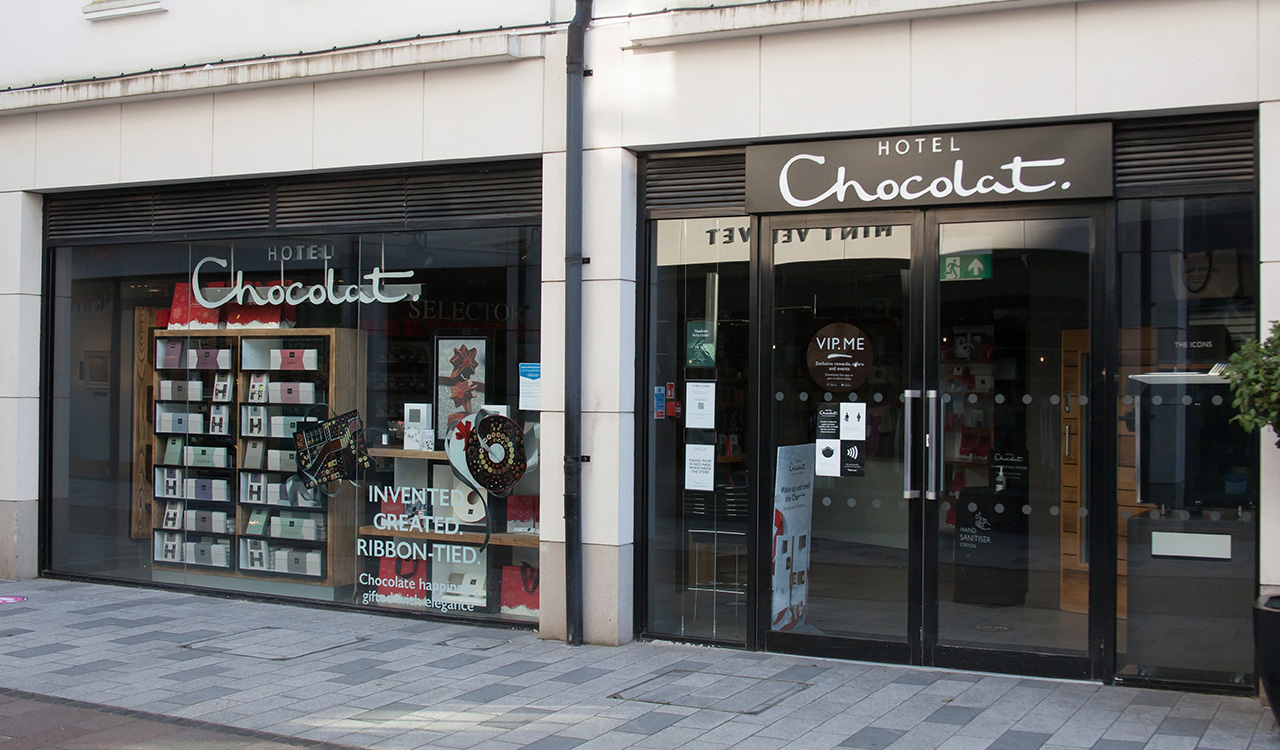I bet nobody actually says “23 skidoo” anymore. Chances are most people have never even heard the expression…much less know what it means. But as a metaphor for retailers in the year we just finished, it certainly fits. So many retailers got rid of pieces of their business – stores, executives, divisions, even entire companies – over the past 12 months that it is the defining maxim for 2023.
For many retailing companies, 2023 marks the end of the line…at least in the form they have been best known for in their glory days. Many will live on as zombie brands online or perhaps with a store or two but at nowhere near the scale they once had.
Skidooing
One hundred years ago 23 skidoo meant something else entirely. Urban legend has it that in 1902 at the corner of Fifth Avenue and Broadway in Manhattan where the streets met on 23rd Street, the brand-new Flatiron building created an atmospheric vortex that caused women’s skirts to blow up in the downdraft coming off the wedge-shaped building. This of course attracted its fair share of male gawkers and the constables assigned to the corner were known to chase them away with the command, “23 skidoo.” It’s a great story – even if it’s not true – but it has little to do with the skidooing we’ve seen 100 years later in 2023.
This past year has been all about dumping all kinds of things that no longer fit the business plan. Blame it on the end of free (or at least cheap) money, the post-pandemic lull in business or just the overall agitation of investors and shareholders to fix what was broken…and in some cases what wasn’t broken.
Let’s review the skidoo results of the past 12 months.
Places
Not even counting the retail operations that went out of business completely and closed everything, there were thousands of individual locations shut down by companies this past year. That happens every year but given the exuberance of just a year or two ago, it seems especially glaring. And don’t forget, this all happened as physical stores clawed back a few points of market share from ecommerce players in the post-pandemic shopping environment. Among the most notable:
- Dollar Stores: Both Dollar General and Dollar Tree (owner of Family Dollar too) each closed between 300 and 500 locations this year. While they often shut stores and usually open even more in any given year, this seemed to be an especially big number this past year.
- CVS: As part of a massive closing of up to 900 locations by the end of next year, the drug chain closed an estimated 300 stores this year. Don’t be surprised if that 900 count gets upped before they are done.
- Walgreens: It is closing 150 stores this year – twice as many are to be shut in the UK – as it too tries to find its physical footprint footing.
- Rite Aid: The retailer, now in Chapter 11 bankruptcy, said it is closing about 154 locations, which unlike its bigger competitors represents close to 10 percent of its entire count. It’s probably not done.
- Gap: It is finishing up a round of about 350 Gap and Banana Republic closings that started two years ago, so its exact 2023 count is hard to pin down. With a new CEO, more closings may be on the way.
- Amazon: The online master can’t get the hang of physical retail and after shutting down its book and general merchandise stores earlier in the year, it said it was closing at least nine of its Go locations as well as its Style apparel stores. We’d be shocked if there weren’t more.
- Walmart and Target: Each is closing a handful of stores, even claiming they are the result of shoplifting and retail crime. Given the debunking of that theory, we think they were just bad locations.
- Macy’s: You would think otherwise given the noise, but it only closed four locations this year. With new private equity stalkers that could be nothing compared to next year if a deal gets done.
- Foot Locker: Although its 545 announced closings under both its own brand and its Champs Sports division didn’t happen in 2023, they are set to be ongoing through the next 36 months.
People
In many cases, companies decided it had to be the CEO’s fault for whatever went wrong. After all, assigning blame is one of the hallmarks of American business. Retail Dive tallied up some 50 exits in the retail ranks and we’re sure there were more. And this doesn’t even count the turnovers at Macy’s and Costco set to happen in the first quarter of next year.
So, from the top of the top of retail to the bottom of the bottom, the revolving doors were on fast-forward this past year. Among the standouts:
- Jonathan Johnson of Beyond, the company previously known as Overstock.com.
- Jeff Owen from Dollar General, as the dollar store overall experienced an unexpected bumpy road.
- Mike Witynski of neighboring Dollar Tree, see above for why.
- Roz Brewer of Walgreens, another channel in upheaval as post-Covid pharmaceutical needs got dialed back.
- Heyward Donigan of Rite Aid, see above for why…and further above for bigger skidoos at the company.
- Elizabeth Spaulding at Stitch Fix as the entire resale/re-retail channel found itself struggling.
Pivots
- Amazon: The 11 stores closed this year were nothing for a $400 billion company, but they represented its entire Style (two locations) brand and many of its Go self-serve grocery brands. It just can’t seem to figure out face-to-face retailing.
- Home Goods: Even as the home-centric banner of TJX opens more physical stores it closed its entire ecommerce operation after only two years in business. It takes that long for many shoppers to figure out shipping charges.
- Foot Locker: Some of its store closings represented the shutdown of entire brands, like its Atmos in-store brand. Under its new CEO, it seems to be circling the wagons around the mothership.
The End
For many retailing companies, 2023 marks the end of the line…at least in the form they have been best known for in their glory days. Many will live on as zombie brands online or perhaps with a store or two but at nowhere near the scale they once had. The closing of Bed Bath & Beyond had some significant collateral damage.
- Bed Bath & Beyond: Once the biggest player in housewares and soft home, BBB went bust in the spring and while its name lives in the online world the ubiquitous blue coupons in your mailbox are no more.
- Tuesday Morning: It took a few rounds but this off-pricer is now gone, its investors deciding not to throw good money after bad…regardless of the day of the week.
- Christmas Tree Shops: Another branch of the BBB tree had new ownership but the same old troubles. It doesn’t seem like it will even survive online, which should tell you something.
So, 2023 was especially ugly for the retailing world. And that’s saying something when even Sears and Kmart remain in business. It should be noted, however, that the fabled Flatiron building (wind tunnel vortex aside) has new owners and is being renovated, and turned into condos, signaling a new era. Looking ahead, 24 skidoo doesn’t have quite the same caché, does it?





